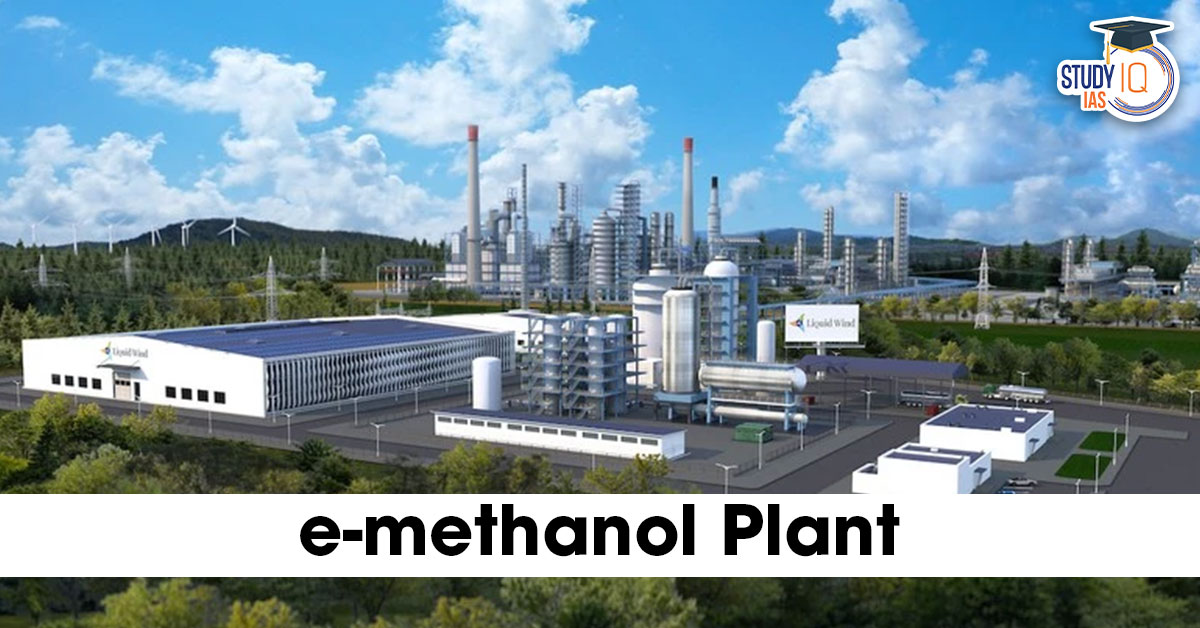Table of Contents
Context: The World’s first commercial-scale e-methanol plant opens in Denmark.
What is E-Methanol?
- E-Methanol is a low-carbon fuel produced by combining green hydrogen with captured carbon dioxide.
- It serves as a clean energy alternative to fossil-based fuels.
Production Process
- Green Hydrogen Generation: Hydrogen is generated via renewable energy-powered electrolysis of water.
- Carbon Dioxide Capture: CO₂ is captured from sources like industrial flue gases (e.g. steel or cement plants) or direct air capture, helping reduce emissions.
- Methanol Synthesis: Hydrogen and CO₂ are combined in a catalytic reactor under pressure, producing methanol with minimal by-products.
Key Benefits
- Infrastructure-compatible: Can be used without major changes to current fuel systems.
- Stable: Easily stored at room temperature and ambient pressure.
- Versatile: Can be used directly or converted into other fuels (like gasoline or kerosene).
Applications
- Shipping Industry: Clean marine fuel.
- Road and Air Transport: Through derivatives like gasoline and kerosene.
Challenges
- High Cost: Much costlier than fossil methanol due to:
- Expensive renewable electricity
- Production inefficiencies
E-Methanol Plant in India
India is moving towards the establishment of e-methanol plants as the nation continues to try to become less dependent on fossil fuels while encouraging cleaner energy solutions. E-methanol, or green methanol, or renewable methanol, is a fuel that is synthesised through the mixture of green hydrogen and captured CO2, where the green hydrogen is produced by water electrolysis using renewable electricity.
| Methanol Economy Programme (India) – by NITI Aayog |
|


 Bonnet Macaques: Habitat, Features, Beha...
Bonnet Macaques: Habitat, Features, Beha...
 Periyar Tiger Reserve, Map, Flora, Fauna...
Periyar Tiger Reserve, Map, Flora, Fauna...
 Project Cheetah in India, Objectives, Ch...
Project Cheetah in India, Objectives, Ch...

























